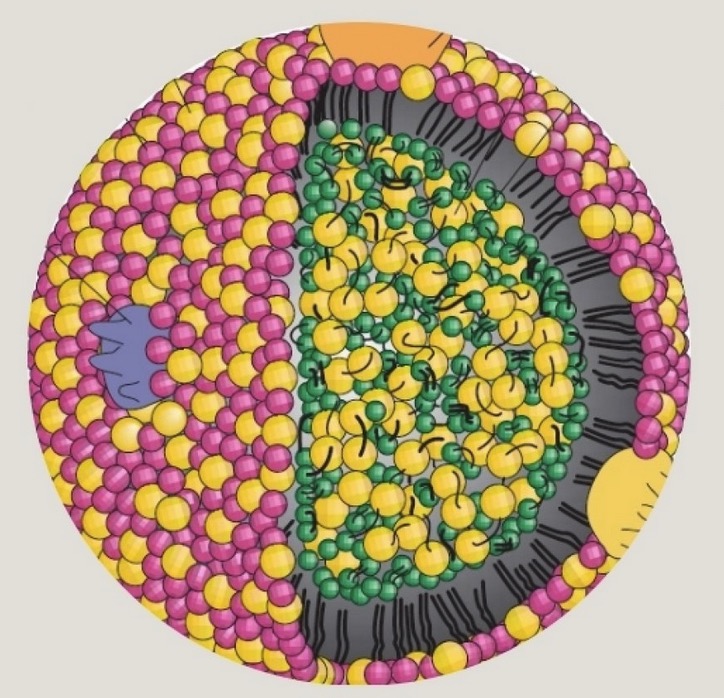Robert H. Lustig, M.D., M.S.L. is Professor emeritus of Pediatrics, Division of Endocrinology at the University of California, San Francisco (UCSF). He specialises in the field of neuroendocrinology, with an emphasis on the regulation of energy balance by the central nervous system. His research and clinical practice has focused on childhood obesity and diabetes. Dr. Lustig holds a Bachelor’s in Science from MIT, a Doctorate in Medicine from Cornell University. Medical College, and a Master’s of Studies in Law from U.C. Hastings College of the Law.
Dr. Lustig has fostered a global discussion of metabolic health and nutrition, exposing some of the leading myths that underlie the current pandemic of diet-related disease. He believes the food business, by pushing processed food loaded with sugar, has hacked our bodies and minds to pursue pleasure instead of happiness; fostering today’s epidemics of addiction and depression. Yet by focusing on real food, we can beat the odds against sugar, processed food, obesity, and disease.


My notes from the lecture:
Correlation and plausibility argument concerning cancer risk
his practice is not exclusively low carb, uses low carb for the right patient, or low fat for the right patient, the trick is knowing which is which.
Obesity is a risk for cancer, hazard ratio of 1.5 (50% more likely).
Cancers correlated with obesity are endodermal cancers, not bone, not muscle, not fat, not skin, not cns. Why?
slide
Possible correlation due to several issues
Obesity is not the problem
slide on diabetes vs country weight
Obesity is increasing worldwide by 2.78% per year, but Diabetes is increasing at 4.07%. If Diabetes is a subset of obesity, why is it growing faster?
240M USA people; 72M Obease (30%), 168M Normal Weight (70%). Standard mantra - “80% of the 30% obese individuals are sick, fat… sick because they are fat. If they would only diet and exercise we would solve this problem”. However, 20% of the 30% are not sick, MHO Metabolically healthy obese, even have normal length telomeres. However, importantly, 40% of the normal weight population have metabolic dysfunction, they get it at a lower weight… if the thin people get it, how can it be about behavior? It looks like exposure, that everyone including normal weight people are exposed to.
There are more thin-sick people (67m) then fat-sick people (57m) in the USA, therefor its not a obesity problem. (half the USA population is sick - 124m)
slide
TOFI - Thin on Outside Fat on Inside (Visceral Fat) - This population is a good candidate for low carb.
Obesity is not the problem, it is a symptom. Metabolic Syndrome is the problem. 75% of healthcare dollars go to treating metabolic syndrome. Which includes - Diabetes, Hypertension, Lipid abnormalities, Cardiovascular disease, fatty liver disease, PCOS, cancer, dementia.
slide
If its not calories, and not obesity, then it might be the type of calorie, not all calories are the same. Ultra processed food is 62% of USA diet. Every 10% increase in ultraprocessed foods increases cancer by 12%
slide
Sugar has been replacing fat in the USA diet since the 1820s - 25x increase to 100lbs per year.
Glucose, Fructose, Sucrose are metabolized differently, but ultimately become serum glucose. Toxic.
Industry sponsored research vs independent research shows a massive bias in correlating sugar with weight gain. 16% when industry sponsored, vs 83% when independently funded.
slide
The literature is deliberately polluted to make it seem inconclusive.
The adipose centric model of insulin resistance is valid for about 10% of the population. 50% of the population gets insulin resistance through the liver (non-alcoholic fatty liver disease) - mitochondrial overload. Could also be branch chain amino acids triggering this pathway from corn fed beef.
intrahepatic fat explains metabolic syndrom better then visceral fat. 45% of adult USA have FLD.
slide
Change in liver fat predicted insulin sensitivity after 9 days of isocholoric fructose restriction, metabolic syndrome improved in a cohort of children in SF.
Maillard reaction - non-enzymatic glycation (its how the hba1c measurement works). (The same as cooking browning reaction).
Everyone is oxidizing throughout their lives (browning). The one thing you can control is how fast you brown/oxidize. fructose oxidizes much faster then glucose.
slide
Cancer is a metabolic disease. Warburg effect - Cancer cells don’t need oxygen to grow. Differentiated tissue have mitochondria (can process oxygen and fat - anaerobic), cancer cells (fetal cells too) (warburg effect) can not process oxygen and fat.
Cancer cells can either burn, or grow but not both.
slide
normal cell
cancer cell
So the question is - How can a cancer cell (2 ATPs from glucose) grow at all, when a normal cell gets (108 ATPs from fat)… The cancer cell opens the flood gates to glucose… 2 ATPs… times 400 times more quickly. Glycolysis is inefficient but fast, so can be repeated over and over.
Therefor, Glucose is VITAL for cancer cell growth.
slide
Cancer cells - all about making new cells.
Hypothesis - 3 enzymes in each cell telling them what to do with the energy - MTOR, AMPK, PI3K, they can be on or off, 2^3 = 8 permutations. 2 states are well defined for normal operation, 6 lead to dysfunction.
These enzymes are set by food and diet. Methylglyoxal a end product of metabolizing fructose disables AMP, leading to a friendly environment for cancer.
slide
Wrap up
slide
We are giving cancer patients SUGAR (ensure plus - a milkshake basically) which is exactly what they shouldn’t be consuming.
Finished! Wow, that was alot of notes! fascinating talk. Not sure about every point, I think some of the factors he says are perhaps not the complete story (when he says something isn’t associate, I think he means it hasn’t been shown with confidence, but not ruled out either)